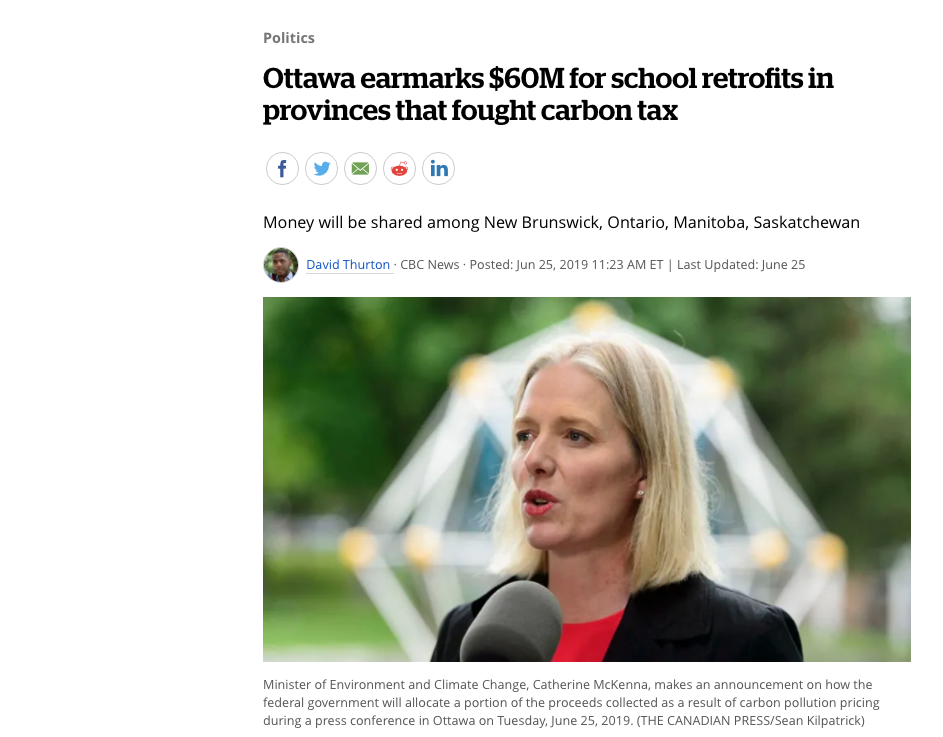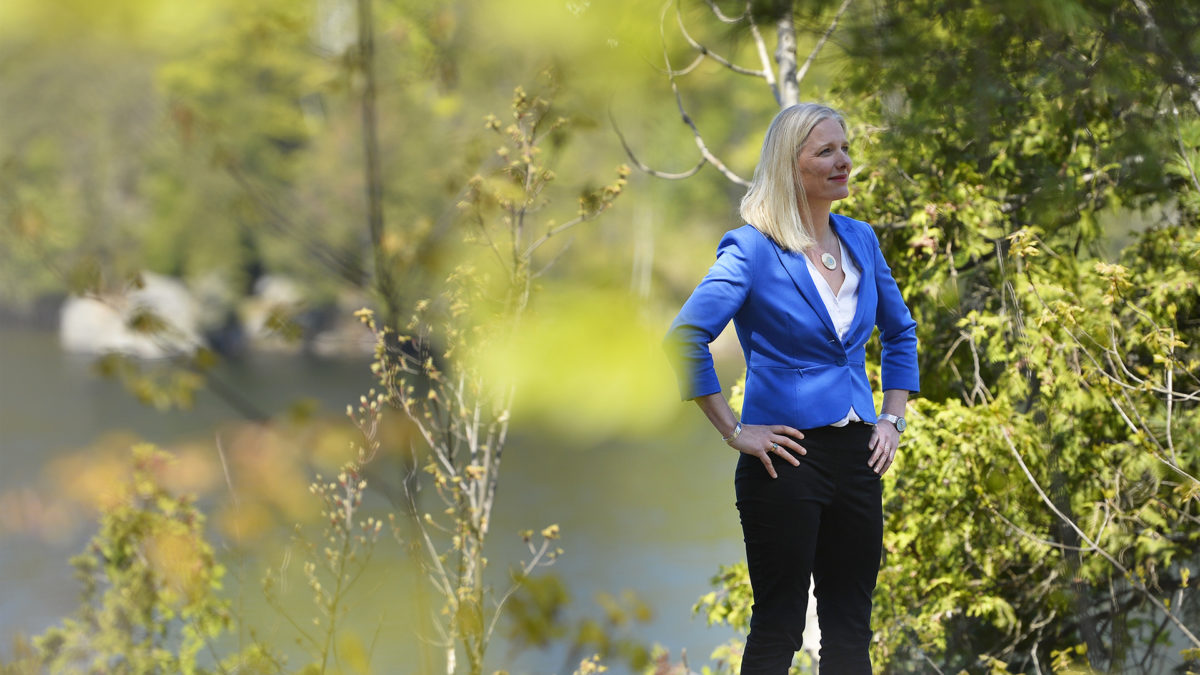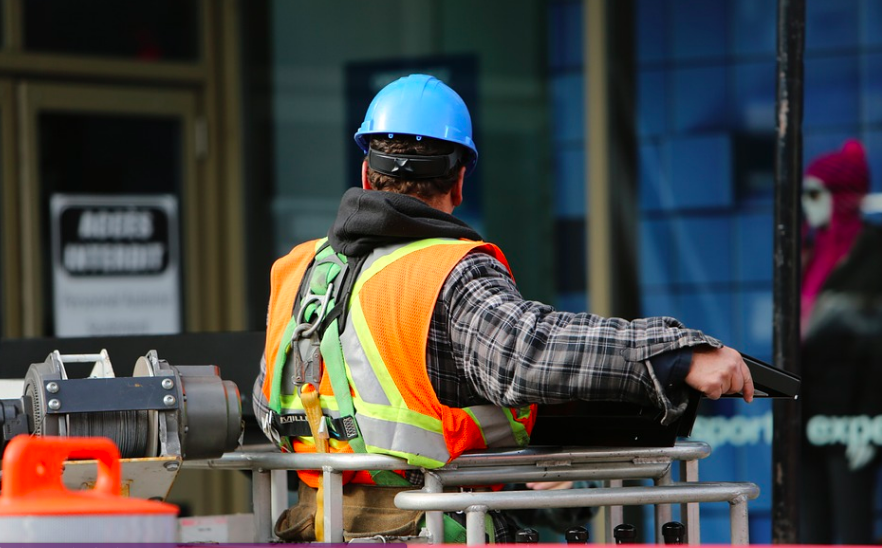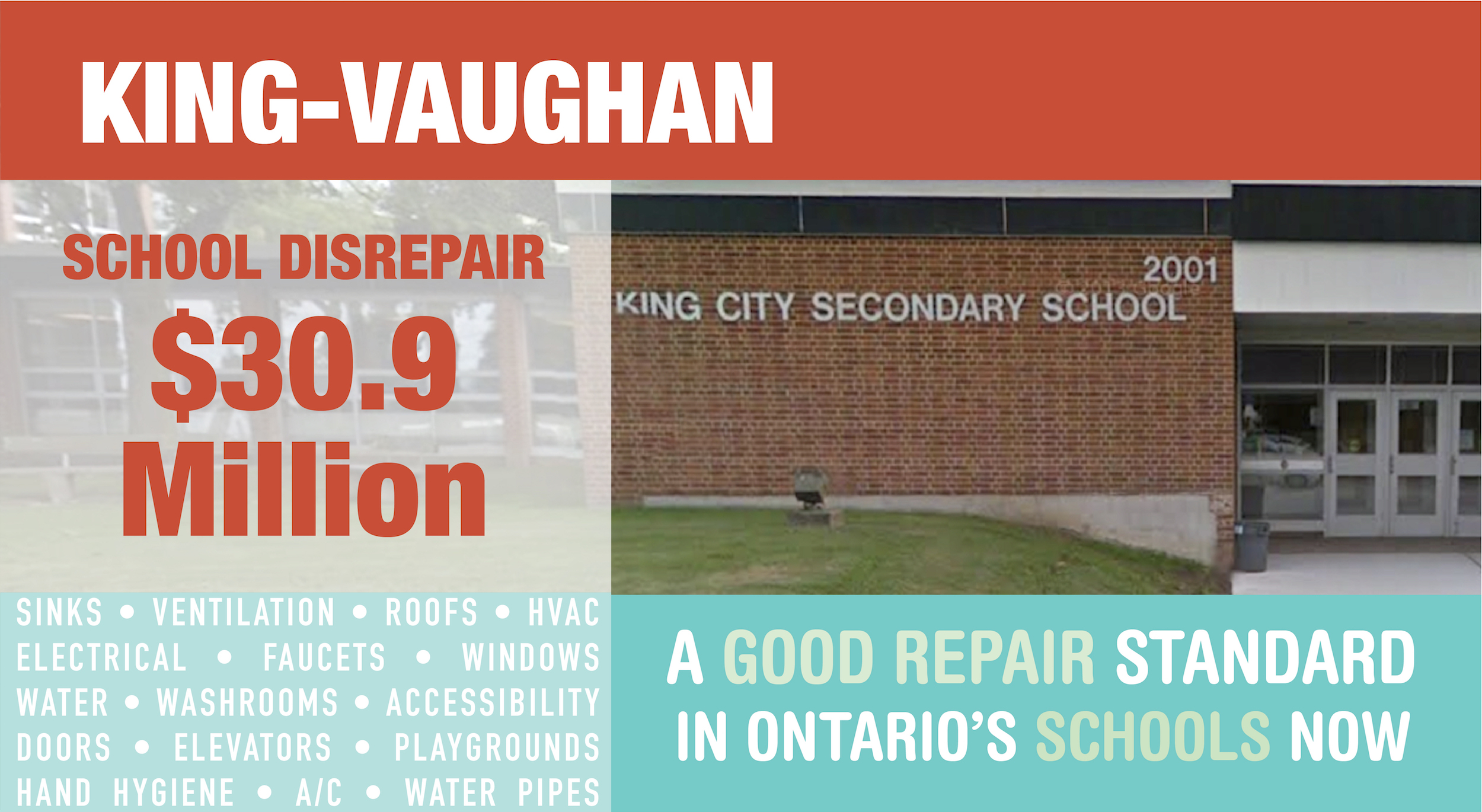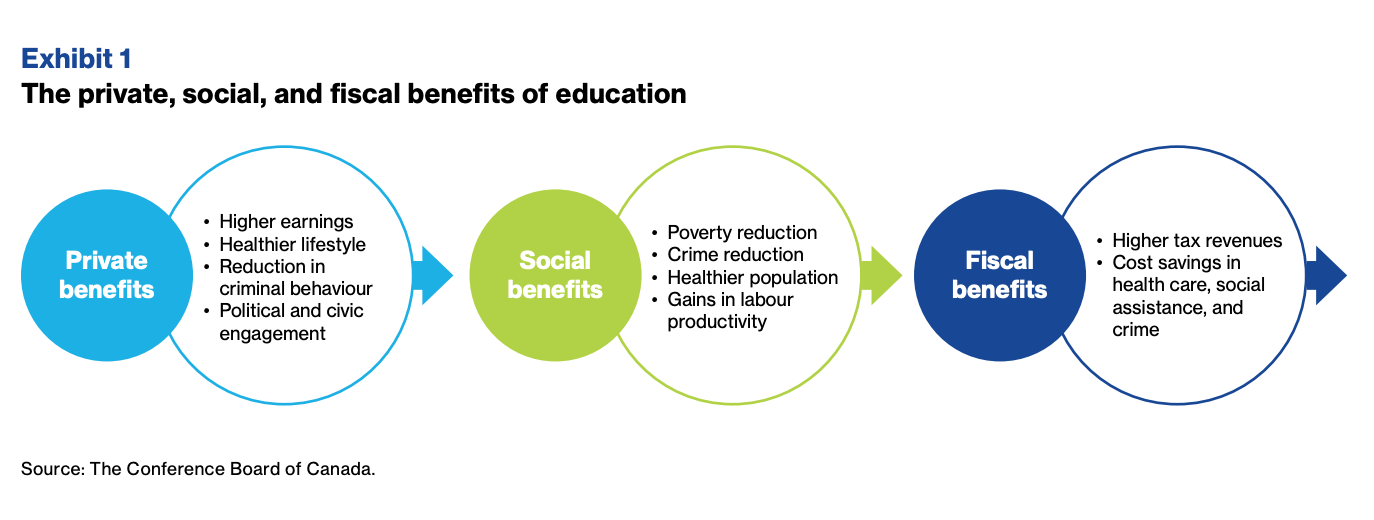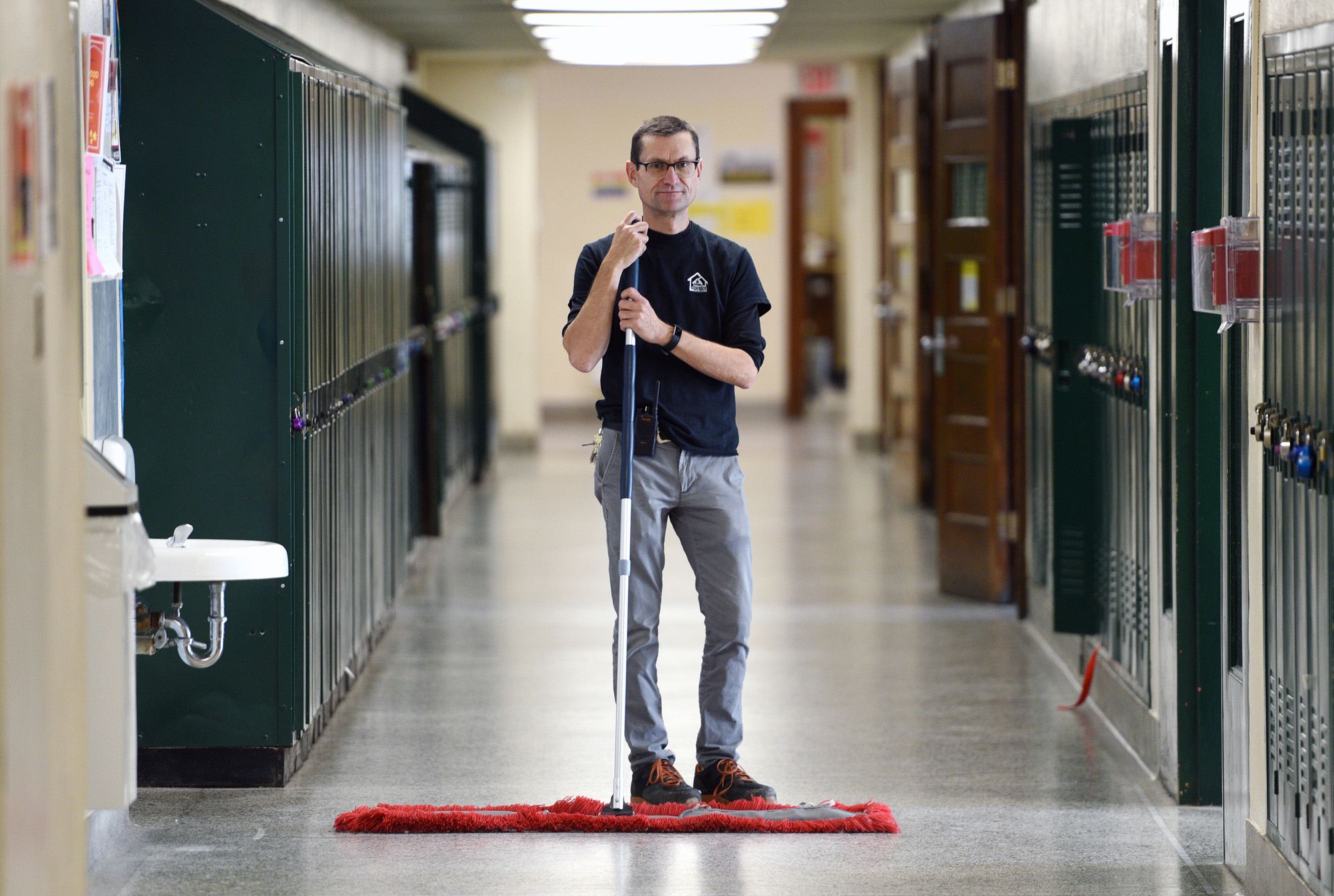In addition to the federal Climate Action Incentive Fund, in which Ontario agreed to participate, there may be additional sources of federal funding for green school infrastructure projects via the Clean Growth Hub.
Back in May 2019, Fix Our Schools noticed that a high school in the London Catholic District School Board had plans for a $9.7-million energy-efficient retrofit and that $4.8-million of this amount was coming from the federal government. To our knowledge, this was the first time that our federal government had invested in public schools (outside of First Nations schools, which are a federal responsibility) as critical infrastructure.
Fix Our Schools was optimistic that this project would set an important precedent so we dug in to see if we could find out more. What we found was that the federal government operates a Clean Growth Hub, an advisory service that aggregates various available funding opportunities for clean tech available through the federal government and that, from time to time, funding programs being offered by the federal government could align with green projects being conducted by school boards across Canada.
The Clean Growth Hub is a whole-of-government focal point for clean technology. Fix Our Schools encourages all Canadian school boards to monitor the Clean Growth Hub and to see if any programs being offered at a given time would allow federal money to be accessed for local energy-efficient projects in schools. London Catholic School Board had the foresight to do this and was able to benefit from $4.8-million of federal money!
Hearing from @KateYoungMP at John Paul II, where the school has just announced it will become Canada’s first carbon neutral school. This means JPII will produce all of its energy needs while reducing the school’s greenhouse gas emissions to near zero on an annual basis #LdnOnt pic.twitter.com/kUNvGc0rm3
— Andrew Graham (@andrewjwgraham) May 22, 2019


